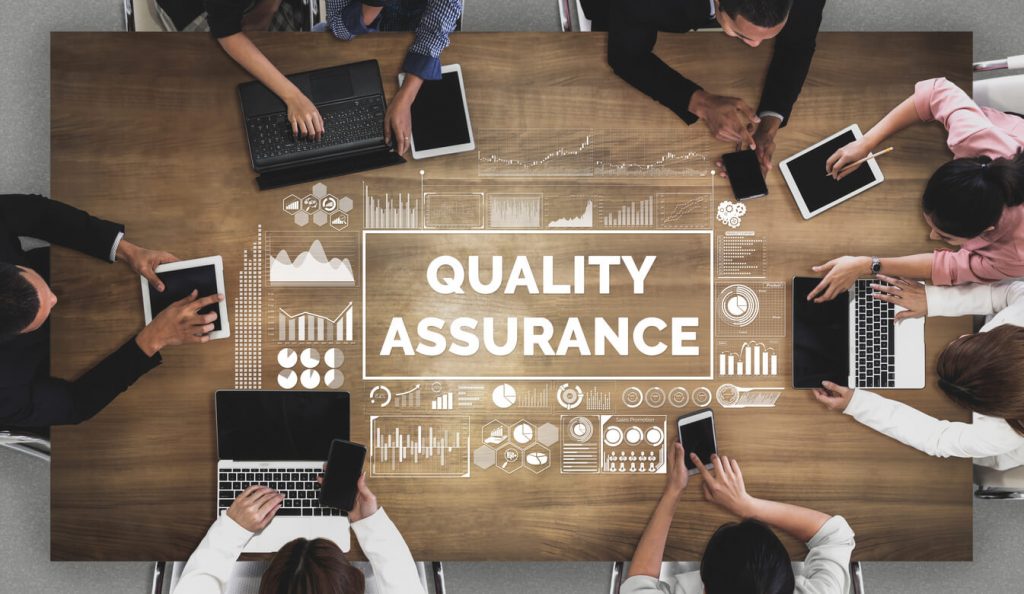At Simply Contact, we specialize in creating personalized customer support solutions that drive business growth and customer satisfaction. Let us help you elevate your customer experience and stand out from the competition.

In 2018, according to the wiseguyreports.com, the global Contact Center market size was about $27,7 billion. Also, it is expected to reach $40,0 billion by the end of 2025. It’s a market with more than 1.5 million employees and every second person on the planet who used the support services. Or even every first. Impressive, right? But how the call centers can give excellent services and make money on it? The trick hides in constant monitoring.
The call centers are the strategic business component so the most effective quality control lies in multidimensional tracking and evaluation of operators' work.
There are two ways in which contact center quality monitoring can be done:
- Internal control department - a structural unit of the company to which the call center belongs.
- Third-party controller.
Outsourcing control is preferred. It's conducted more carefully than internal control and eliminates bias and motivation lack in the identifying problem process.
Which Indicators Are Better to Include in Call Quality Monitoring?
Requirements for the quality of call service vary and depend on the characteristics of the company, the subject of requests, and the target audience. Also, the quality of inbound and outbound calls should be assessed differently. That’s why there are many parameter sets that the optimal request must meet. Each company has its own. For example, the Canadian Marketing Association recommends a set of 10 indicators assessing the quality of a call center:
- Abandon Rate. Typically, an indicator shows how quickly call center operators to respond to calls. The faster the answer to the request, the lower will be the percentage of the index. High AR will signalize low call center productivity and poor customer service.
- Average Talk Time (ATT) & After Call Work (ACW) & Average Handle Time (AHT). The ATT indicates how long the operator was talking to the customer. The second is a post-processing treatment. AHT is a combination of the first two and an indicator of average order processing time. The importance of the AHT is challenging to overestimate because the cost of an extra AHT second in some companies can reach a million dollars a year.
- Adherence & Shrinkage. Mainly, the indicator reflects employee performance. The essence of the index comes down to a comparison actual working time of the operator with his billable hours.
- Attendance & Punctuality. The indicator is designed to track the attendance and punctuality of call center employees.
- Service Level & Average Speed of Answer (ASA). The indicator shows the number of answered calls for a specific time. There is no definite standard, but most call centers tend to be 80/20. That means that operators must try to receive 80% of all incoming calls within the first 20 seconds.
- First Call Resolution. The index shows what percentage of client requests are allowed for the first call to the call center.
- Occupancy. It defines how well staff is scheduled for the call volumes coming into your contact center.
- Cost per Call (Contact). It shows the price of a call arriving and being answered at your contact center. It can be calculated in several ways: by the price for one call and by the total sum of year expenses for one request.
- Turnover (Attrition). The indicator will show the percentage of staff turnover in the call center.
- Call Quality. The standard rating system for contact centers to determine how well the operator works with customers.
Each indicator has its formula for the calculation and allows us to make an accurate picture of the call center work, to identify its advantages and disadvantages. However, not all call centers need such detailed analysis. For everyday monitoring, all signs can be boiled down to 5 general indications:
#1 Technical call quality
This parameter shows how long the caller is waiting for the connection with the operator or expert, how long the conversation lasts and how good the sound quality is. It is also necessary to track how many operators are available for a specific time and how busy operators correlate with the waiting time for answering incoming calls.

#2 Operator compliance with communication style and ethics
There are basic requirements and universal approaches to conducting conversation ethics that each operator must adhere to. Each call should include a greeting at the beginning of the request, personalized acquaintance, gratitude for the message, and emphasizing the importance of the message. In addition, the operator must tactfully reduce unproductive communication, if the client is distracted from the essence of the call, he should ask clarifying questions, if it is difficult for the person to formulate his claims, wishes or problems. General goodwill, pleasant voice, and calm tone of communication are also estimated. Politeness must be respected under any circumstances and with any behavior of the recipient.
#3 Information content of the client-operator conversation
It is necessary to produce QA by the informative criterion of the call. In a short period, the operator must provide a client with the maximum relevant information about the company, and product, and get maximum information from the client - how interested he is in the product and whether is he ready to buy it. Also, the call can relate to solving any customer problems. In this case, you need to analyze was the problem solved and how you can avoid such difficulties in the future. The post-processing time of the call is also necessary to track. That is, how long did it take for the operator to complete an application or search for an answer to a client’s question after he placed the phone?
#4 Call algorithm. Designing and following
Often the call center develops scenarios for both outgoing and incoming calls. Conducting a conversation on the script can reduce the time of the interview and increase its efficiency. Also, the script helps to save the operator time by answering the same questions. However, it is better to monitor all algorithm deviations. Evaluations require both negative (customer failure or even delaying communication time), and positive deviations from the scenario. The analysis of such differences can help improve and adjust communication algorithms.
#5 Actual call efficiency
If the work of the call center includes not just consulting and informing but performing specific tasks, then the evaluation of the performance of these tasks by one operator or the whole call center makes sense. For example, you can compare the number of calls with the number of perfect sales or how many calls ended with the order, or with the visit of the customer. If the requests are received by the technical support service personnel, who give recommendations on troubleshooting, it is important to calculate in what number of cases the communication with the specialist allowed the client to solve his problem completely.
Methods and Technologies for Call Center Quality Monitoring
It is necessary to draw up a methodology that combines several ways to assess the quality of service to implement the quality monitoring call center.
Call recording
The most common way to make a call center call monitoring is by recording and listening to the calls according to several requirements:
- The impartiality of who will listen to and evaluate requests. An outsourced specialist will perform this task better than an employee or a call center manager.
- Тhe uniform verification criteria. Sometimes it's necessary to ask all of the controllers to evaluate the same conversation to compare whether all of them correctly understand the compliance or non-compliance of recorded interviews with the selected criteria.
- The representative sample of calls compilation. For example, you can investigate a certain percentage of the requests received by each operator, while respecting the proportion of incoming and outgoing calls. Dividing the conversations into sales and consultations is also essential to take into account.

The automated speech recognition systems
Some specialized programs can save and automatically identify words of oral speech. They use for a large volume of records analysis, the processing of which by the controller would take too much time. The program can recognize individual words that the operator must use in the dialogue (for example, greetings, farewells, as well as the name of the product or company). The program can also characterize the overall tone of speech (calm or agitated, angry). However, it’s not worthwhile to consider automated analysis as an adequate substitute for the work of the operators - the program often cannot correctly evaluate the information content of speech and the relevance of operator responses to incoming requests. The best option for large call centers is the combination of automated systems and selective listening of the conversations by controllers.
Customer reviews
You can complete a conversation with a customer with a few questions about the quality of service. If a person agrees to answer the questions, then you can ask if the call resolved his difficulties (with an incoming call) if is he satisfied with the work of the operator and whether he learned something useful for himself. It is essential not to tire the interlocutor with a survey and to collect reviews. There should be only a few concisely formulated questions, and they should be as transparent as possible to any person. The answers should be assumed in the “yes/no” format so that many of the unified responses of many customers to the same questions could be derived from general statistics.
Personnel check
Sometimes “test calls” make sense like selective appeals of employees checking under the guise of a client to the operators. The purpose of the test is to lead the operator to situations that are difficult for him and see how he will react.

Call Center Quality Assurance Tips
It's possible to provide tips on how to improve the effectiveness of the call center, individual employees, or cases based on the monitoring results.
After analyzing the arisen problems, you can make additions to the conducting conversations algorithms, and give tips on how to solve frequently encountered difficulties.
Also, you can improve the motivation of people working in a call center. For example, you can reward top employees who were least refused to answer the request callers. The assurance of such remuneration will contribute to better work of employees and help to improve efficiency in work with outgoing calls.
Call tracing isn't a fad. It is a necessity. Such monitoring will allow you to track down problems in call center work or the efficiency of staff. It will also help to notice the need for additional instructions, changing or adjusting the algorithm of work.
Get fast answers to any remaining questions
Thank you.
Your request has been sent successfully.
Your request has been sent successfully.



